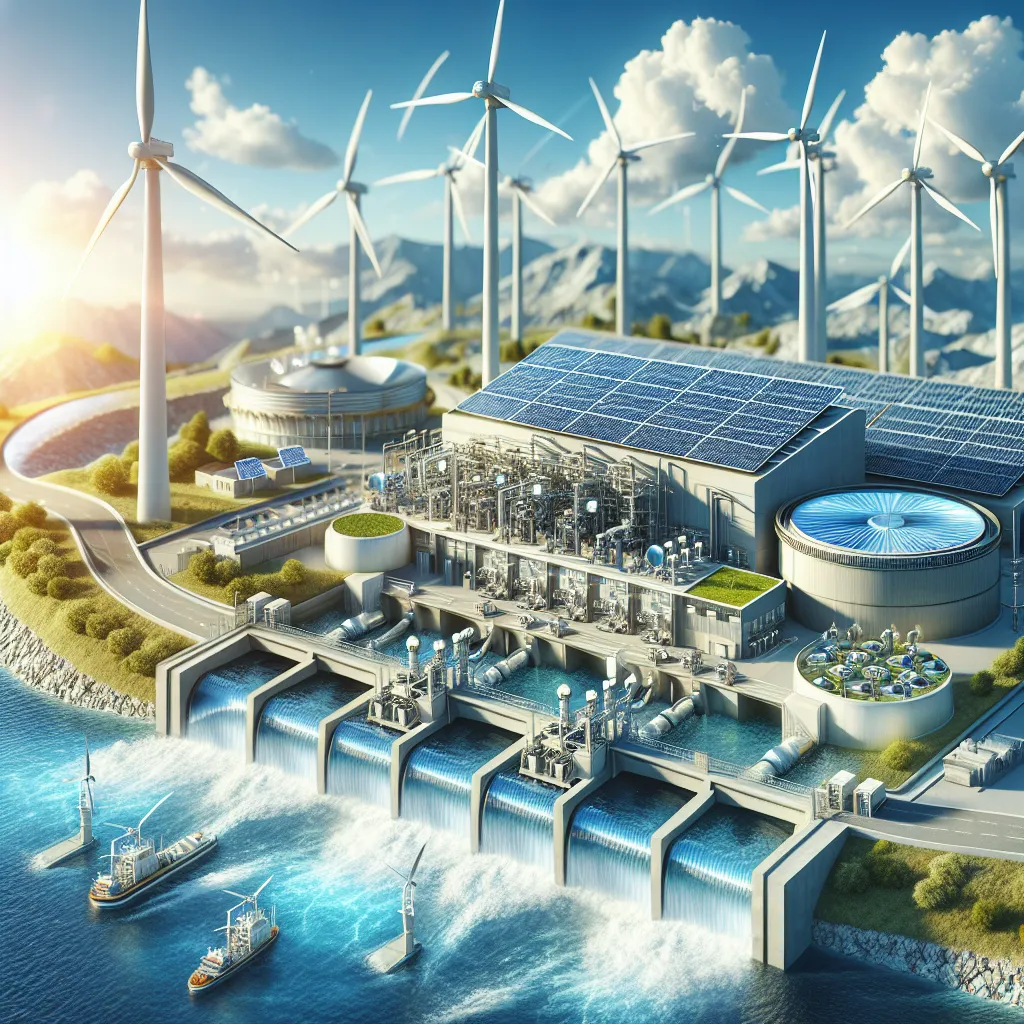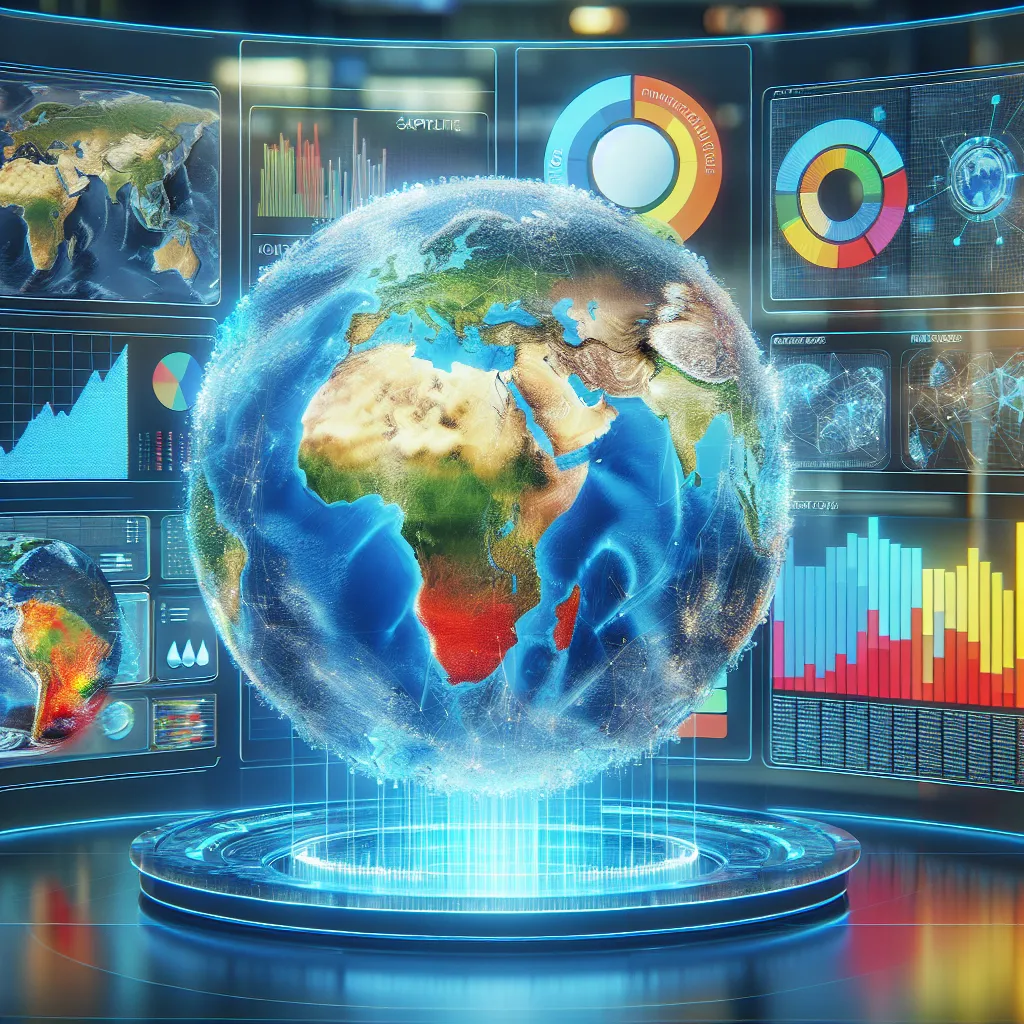Baca dalam Bahasa Indonesia Powering the Future: AI or Die in the Energy Sector The energy sector faces unprecedented challenges in the 21st century. Climate change, dwindling resources, and an increasing demand for sustainable energy solutions have created a perfect storm that necessitates innovation and efficiency. As the world grapples with these issues, one technology stands out as a beacon of hope: Artificial Intelligence (AI). This blog post will explore the pressing problems in the energy sector, the transformative potential of AI, and suggest actionable solutions to power the future.
[Read More]
AI-Based Climate Adaptation Models for Water Infrastructure | Model Adaptasi Iklim Berbasis AI untuk Infrastruktur Air
Baca dalam Bahasa Indonesia AI-Based Climate Adaptation Models for Water Infrastructure Introduction The pressing issue of climate change has become a global concern, affecting various sectors, including water management. As weather patterns become increasingly erratic and extreme, the infrastructure that supports our water supply faces unprecedented challenges. In many regions, especially those vulnerable to droughts and floods, the integrity and efficiency of water systems are at risk.
This blog post delves into the intersection of artificial intelligence (AI) and climate adaptation strategies for water infrastructure.
[Read More]
AI-Driven Models for Managing Water Resources in Water-Stressed Regions | Model Berbasis AI untuk Mengelola Sumber Daya Air di Wilayah yang Kekurangan Air
Baca dalam Bahasa Indonesia AI-Driven Models for Managing Water Resources in Water-Stressed Regions
Understanding the Water Crisis
Water is an essential resource for life, yet many regions around the globe are facing significant water stress. This crisis arises from a combination of factors, including:
Population Growth: As populations grow, so does the demand for water for drinking, agriculture, and industry. Climate Change: Altered weather patterns lead to unpredictable rainfall, droughts, and floods, exacerbating water scarcity.
[Read More]
AI-Enhanced Coastal Water Erosion Monitoring | Pemantauan Erosi Air Pesisir yang Ditingkatkan dengan AI
Baca dalam Bahasa Indonesia Understanding Coastal Water Erosion: A Growing Concern
Coastal water erosion is a critical environmental issue that poses significant risks to ecosystems, infrastructure, and communities. The increasing frequency of extreme weather events, combined with rising sea levels due to climate change, exacerbates this problem. Coastal areas are vital for biodiversity, tourism, and economic activities, but they are increasingly vulnerable to erosion.
The Impact of Coastal Erosion Loss of land and habitat: Erosion can lead to the disappearance of beaches, wetlands, and coastal habitats, which are essential for wildlife.
[Read More]
Achieving Net-Zero Targets in Water Treatment Plants | Mencapai Target Net-Zero di Pabrik Pengolahan Air
Baca dalam Bahasa Indonesia Achieving Net-Zero Targets in Water Treatment Plants In recent years, the global conversation surrounding climate change has intensified, urging various sectors to reassess their environmental impact. The water treatment industry, a critical component of public health and environmental sustainability, is not exempt from this scrutiny. With increasing pressure to reduce carbon footprints, many water treatment plants are now pursuing net-zero targets. However, achieving these ambitious goals comes with a unique set of challenges and opportunities.
[Read More]
AI-Assisted Floodplain Mapping and Risk Analysis | Pemetaan Daerah Genangan dan Analisis Risiko yang Dibantu AI
Baca dalam Bahasa Indonesia AI-Assisted Floodplain Mapping and Risk Analysis Understanding the Problem: The Impact of Flooding Flooding is one of the most devastating natural disasters globally, causing extensive damage to infrastructure, ecosystems, and human life. The increasing unpredictability of weather patterns due to climate change has intensified flooding risks, particularly in regions with inadequate flood management systems.
Why Floodplain Mapping is Crucial Identification of Vulnerable Areas: Floodplain mapping helps identify areas that are prone to flooding, enabling better preparedness and risk mitigation.
[Read More]
Predictive Analysis for Water Resource Planning | Analisis Prediktif untuk Perencanaan Sumber Daya Air
Baca dalam Bahasa Indonesia Predictive Analysis for Water Resource Planning Water is an essential resource, vital for human survival, agriculture, and industrial processes. As populations grow and climate change intensifies, the challenge of managing water resources effectively becomes increasingly complex. Predictive analysis emerges as a powerful tool in addressing these challenges, enabling water utility managers to make informed decisions about resource allocation and infrastructure planning. In this blog post, we will explore the issues surrounding water resource management, the role of predictive analysis, and the steps to implement it for optimal planning.
[Read More]
Using AI to Predict Water Scarcity in Developing Regions | Menggunakan AI untuk Memprediksi Kekurangan Air di Wilayah Berkembang
Baca dalam Bahasa Indonesia Using AI to Predict Water Scarcity in Developing Regions
Introduction: The Looming Water Crisis
Water scarcity is an urgent global issue, particularly in developing regions where populations are growing rapidly and climate change is exacerbating existing challenges. By 2025, it is estimated that 1.8 billion people will live in areas plagued by water scarcity, and two-thirds of the world’s population could be under stress conditions. This alarming trend not only threatens human health and livelihoods but also poses significant risks to agricultural production and economic stability.
[Read More]
Renewable Energy Integration Into Water Utilities | Integrasi Energi Terbarukan ke Dalam Utilitas Air

Baca dalam Bahasa Indonesia Renewable Energy Integration Into Water Utilities Introduction: The Convergence of Water and Energy Water utilities face a myriad of challenges today, from fluctuating energy costs to the pressing need for sustainable practices. The intersection of water management and renewable energy presents an innovative solution to these challenges, ensuring that water utilities can operate efficiently while also contributing to environmental sustainability. This blog post explores the pressing issues within water utilities, the benefits of integrating renewable energy, and a step-by-step approach to making this integration a reality.
[Read More]
Using AI to Monitor Global Water Resource Trends | Menggunakan AI untuk Memantau Tren Sumber Daya Air Global

Baca dalam Bahasa Indonesia Understanding the Global Water Crisis Water is an essential resource for life, yet it is becoming increasingly scarce. As populations grow and climates change, the pressure on our water resources intensifies. In many regions around the world, water scarcity is not just a future threat; it is a present reality. The consequences of this crisis are severe, affecting food security, health, and economic stability.
The Scale of the Problem Population Growth: As the world’s population continues to rise, the demand for freshwater increases.
[Read More]